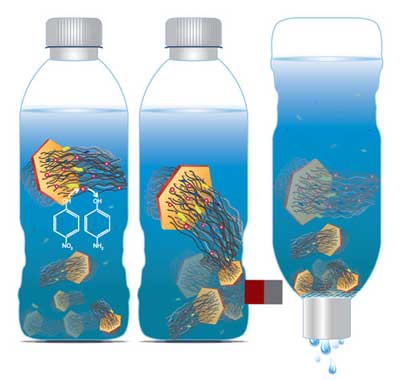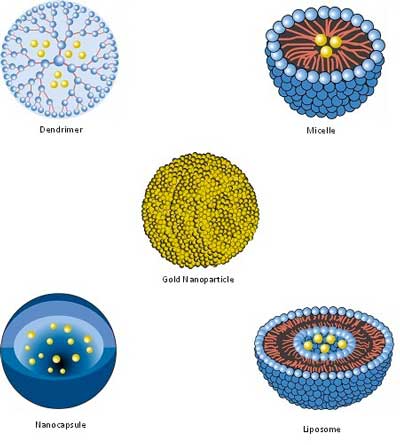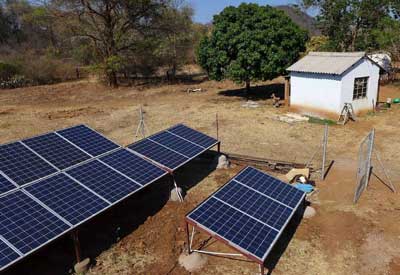| Posted: Jul 13, 2017 | |
Nanotechnology for developing countries |
|
| (Nanowerk Spotlight) In addition to economic, social and political measures, new technologies can provide tools for poverty reduction. Many people in developing countries don't just lack money. Especially in remote regions, many also lack access to electricity, clean drinking water and basic sanitation, cooking facilities, healthcare, adequate housing, etc. | |
| Nanotechnology has potential applications in every industrial sector, from medicine to clean water and energy, thereby promising opportunities for enabling radical changes in the lifestyles of populations around the globe. It is often seen as one of the most promising, cutting-edge, and disruptive technological breakthroughs of the last few decades. | |
| In the area of development cooperation, which is often confronted with demands and scenarios that are hard to predict, nanotechnology is unlikely to solve all of these problems on its own, but may form a component in many cheap and easy-to-use materials, devices and systems. These nanotechnology solutions for development can offer interesting perspectives for medical care, water treatment, agriculture and food, as well as rural infrastructure development. | |
| Aware of the potential benefits that nanotechnologies could have for their populations, some countries in the developing world are hoping that this could allow them to avoid the implementation of outdated technologies (think solar energy versus fossil fuel plants). | |
| Relatively low production costs are envisaged, which could amplify the potential positive outcomes of nano-enabled products by making them very cost-effective to create. Additionally nanomaterials can allow for the special characteristics of rare raw materials to be recreated in more commonplace ones. | |
| The innovative solutions for developing countries supported by the use of nanotechnologies mainly target five areas: water; medicine; agriculture & food; and energy. | |
Water |
|
| According to the World Water Council, 600 million people face water scarcity. Depending on future rates of population growth, between 2.7 billion and 3.2 billion people may be living in either water-scarce or water-stressed conditions by 2025. | |
| The use of nanotechnologies in five key water industry segments – detection, monitoring, desalinization, purification, wastewater treatment – could play a large role in averting the coming water crisis. | |
| With regard to nanotechnology and water treatment, an active emerging area of research is the development of novel nanomaterials with increased affinity, capacity, and selectivity for heavy metals and other contaminants. The benefits from use of nanomaterials may derive from their enhanced reactivity, surface area and sequestration characteristics. A variety of nanomaterials are in various stages of research and development, each possessing unique functionalities that is potentially applicable to the remediation of industrial effluents, groundwater, surface water and drinking water. | |
 |
|
| Schematic of water purification with carbon nanotube ponytails. (Image: Xia Zhao and Na Lab, University of Notre Dame) | |
| Membrane processes are considered key components of advanced water purification and desalination technologies and nanomaterials such as carbon nanotubes, nanoparticles, and dendrimers are contributing to the development of more efficient and cost-effective water filtration processes. | |
| Within regard to sensing, detection, and monitoring, of particular interest is the development of new and enhanced sensors to detect biological and chemical contaminants at very low concentration levels in the environment, including water. | |
Medicine |
|
| The medical advances that may be possible through nanotechnology include both diagnostics and therapeutic procedures. Disease diagnostics and screening play a major role in developing countries, where access to medical facilities is scarce or non-existent. Cheap and easy-to-use diagnostic solutions in form of portable lab-on-chip technology and sensor devices for blood tests and pathogen detection will be especially beneficial in rural areas. | |
| The so called ?big three? diseases (HIV/AIDS, malaria and tuberculosis) are responsible for millions of deaths in developing countries, while their impact on the developed world is significantly less due to the social and medical apparatus in these countries offering better living conditions to those who fall ill. With the help of nanotechnologies, this dramatic issue could be efficiently addressed. | |
 |
|
| Examples of nanopharmaceuticals and their potential use in HIV infection. (? MDPI) | |
| Numerous nanomedicine research efforts deal with diagnosing and fighting the Human immunodeficiency virus (HIV) that causes AIDS (Acquired Immune Deficiency Syndrome). Nanotechnology offers a unique opportunity to combine and improve different pharmacological profiles of antiretroviral drugs, with more convenient drug administration and potentially better patient adherence to HIV therapy. | |
| Research is also underway to use nanotechnology against malaria parasites and nanobiosensors for early detection of tuberculosis as well as exploring the possibility of creating a tuberculosis vaccine. | |
Agriculture and food |
|
| Agricultural productivity enhancement (growing more food with equal or less resources; precision farming with less waste) and food processing & storage are the main impact areas for third world countries where food supply is often limited and the quality of available food leads to nutritional deficiencies. | |
| Technical innovation is of importance with regard to addressing global challenges such as population growth, climate change and the limited availability of important plant nutrients such as phosphorus and potassium. Nanotechnology applied to agricultural production could play a fundamental role for this purpose. | |
 |
|
| Treated with zinc nanoparticles, mung bean plants like these grew larger and produced more beans. (Image: Chad Zuber) | |
| In contrast to conventional fertilizer use, which involves many tons of inputs, nanotechnology focuses on small quantities. Scientists are actively researching a range of metal and metal oxide nanoparticles, also known as nanofertilizer, for use in plant science and agriculture. These materials can be applied to plants through soil irrigation and/or sprayed onto their leaves. | |
| Nanocapsules, nanoparticles and even viral capsids are examples of uses for the enhancement of nutrients absorption by plants and the delivery of active ingredients to specific sites. The use of target-specific nanoparticles can reduce the damage to non-target plant tissues and the amount of chemicals released into the environment. Nanotechnology derived devices are also explored in the field of plant breeding and genetic transformation. | |
| Food processing, food packaging, and food nutrition supplements are all areas where nanotechnology has an impact. Examples are: Nanocarrier systems for delivery of nutrients and supplements in the form of liposomes or biopolymer-based nanoencapsulated substances; Organic nanosized additives for food, supplements and animal feed. | |
Energy |
|
| Nanotechnology in energy generation, distribution, storage, and conversion are areas where a lot of research and application development is taking place in laboratories around the world. | |
| Not only can nanotechnology energy applications provide a path to a sustainable future, but it will provide access to energy where there currently is none. According to the 2016 World Energy Outlook, an estimated 1.2 billion people – 16% of the global population – do not have access to electricity. | |
| Photovoltaics (cheaper and more efficient solar panels) and energy storage (batteries and fuel cells) are the key areas for improving their situation. | |
 |
|
| Photovoltaics for water pumping in a village in Zimbabwe. (Image: Technical University of Munich) | |
| Why is nanotechnology relevant here? Many effects important for energy happen at the nanoscale: In solar cells, for instance, photons can free electrons from a material, which can then flow as an electric current; the chemical reactions inside a battery or fuel cell release electrons which then move through an external circuit; or the role of catalysts in a plethora of chemical reactions. These are just a few examples where nanoscale engineering can significantly improve the efficiency of the underlying processes. | |
| We compiled a list of examples of nanomaterials and applications where nanotechnology can be used in the energy sector. | |
| Notwithstanding the progress in extracting renewable energy from many natural resources through nanotechnologies, research groups worldwide have begun developing triboelectric nanogenerators for harvesting ambient environmental energy – for instance human walking and ocean waves. | |
| A word of caution at the end: Hoping that the 'magic' of nanotechnology will solve all problems in the developing world is naive – the basic problems of accessibility to technologies, affordability, and fair distribution still need to be solved; and they are huge. | |
 By
Michael
Berger
– Michael is author of three books by the Royal Society of Chemistry:
Nano-Society: Pushing the Boundaries of Technology,
Nanotechnology: The Future is Tiny, and
Nanoengineering: The Skills and Tools Making Technology Invisible
Copyright ©
Nanowerk LLC
By
Michael
Berger
– Michael is author of three books by the Royal Society of Chemistry:
Nano-Society: Pushing the Boundaries of Technology,
Nanotechnology: The Future is Tiny, and
Nanoengineering: The Skills and Tools Making Technology Invisible
Copyright ©
Nanowerk LLC
|
|
|
Become a Spotlight guest author! Join our large and growing group of guest contributors. Have you just published a scientific paper or have other exciting developments to share with the nanotechnology community? Here is how to publish on nanowerk.com. |
|
